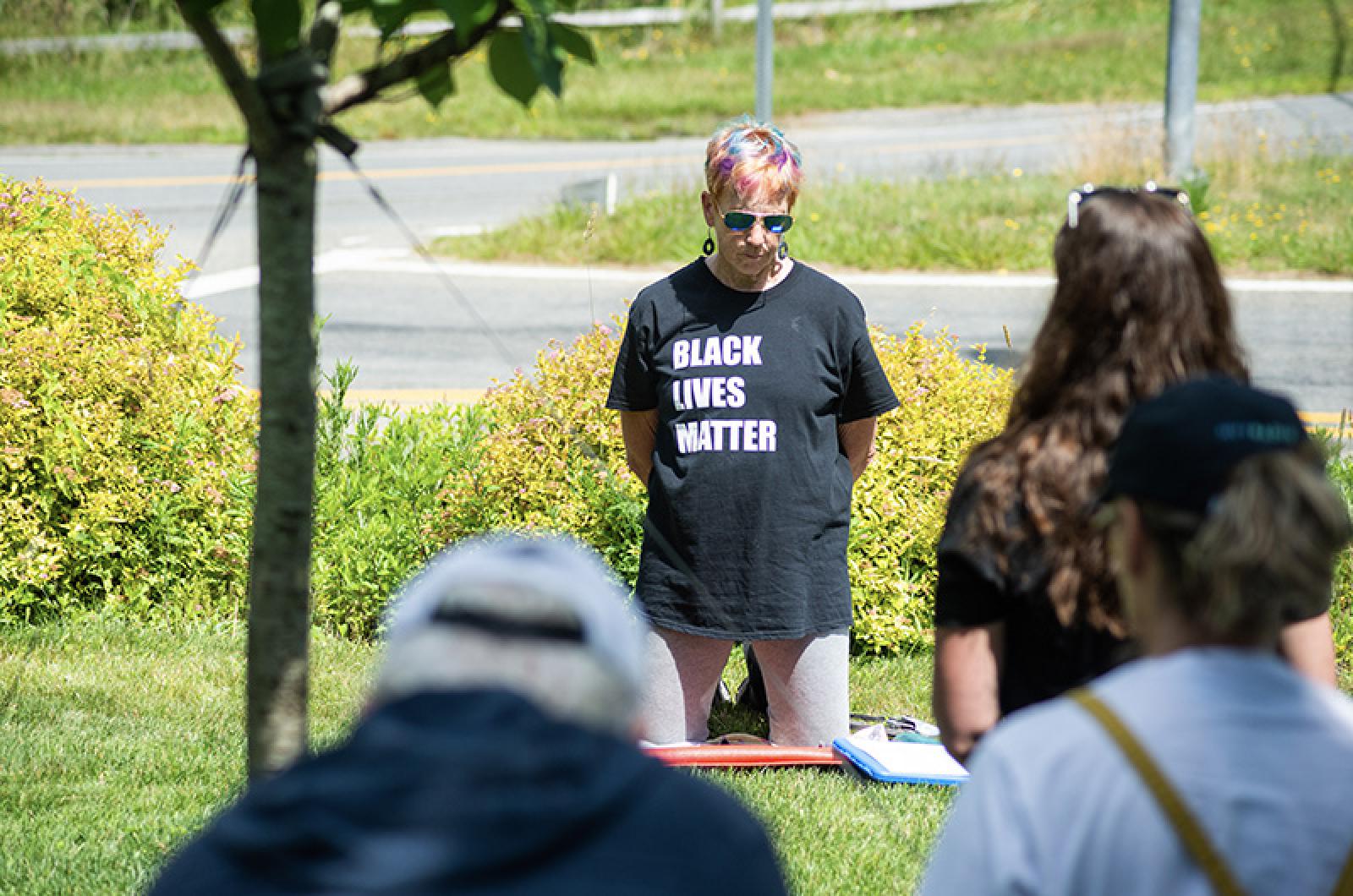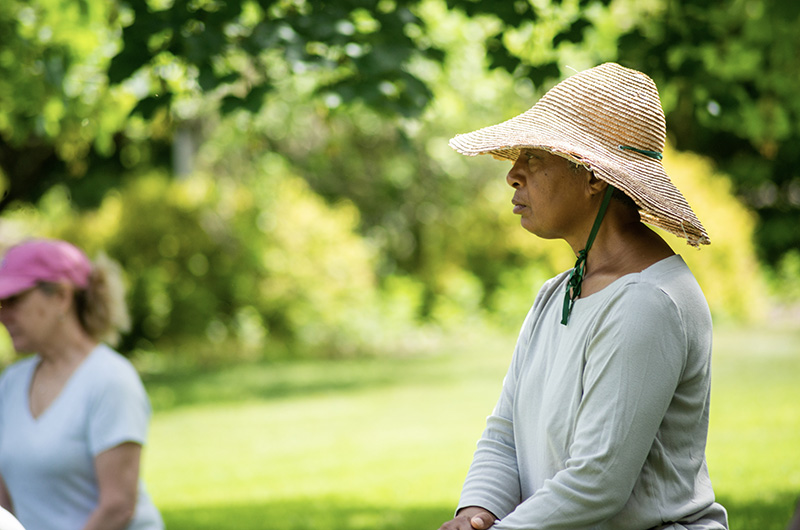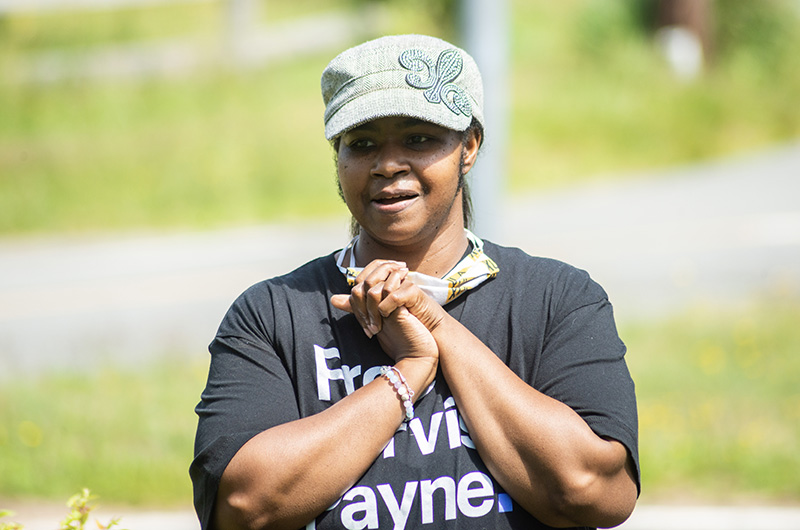On Sunday morning at 10:30 a.m., Dana Nunes stood at Beetlebung Corner in her trademark yellow rain boots preparing to take part in the return of the kneel-ins, a vigil to honor and remember the many people of color who have been killed or harmed by police violence in the United States. The vigil was started by Ms. Nunes last summer after the murder of George Floyd and took place everyday at Beetlebung corner through Nov. 25. Throughout the winter, participants kept up the vigil on weekly Zoom gatherings.
But this summer as the vigils return on Sunday morings, both in-person and by Zoom, Ms. Nunes is joining the group as a participant instead of a leader.
“It was an immediate shift after Nov. 25,” she said on Sunday. “I told them, I don’t do Zoom and it was all theirs. And they did a wonderful job with it. They ran with it. It’s been great watching them do their thing and stepping back.”
The vigils are now organized by a younger generation, Ms. Nunes said, including Lisette Williams, Carly Sousa and Ali Sousa. The morning begins with a speaker telling the story of an individual who has been killed or unjustly incarcerated and then the group repeats that person’s name and kneels for nine minutes and 29 seconds, the same amount of time Derek Chauvin kneeled on George Floyd’s neck.
This Sunday’s speaker was Kathy Laskowski, an Oak Bluffs resident. As the wind picked up, Ms. Laskowski raised her voice, determined to be heard. She talked about Leo Alexander Jones, a black man who was arrested, beaten and executed for the murder of a white police officer, but whose guilty verdict many called into question. After telling his story, Ms. Laskowski raised a series of questions.
“Where was Leo Jones family?” she asked. “Did he have anyone to support him? Was there anyone to fight for him besides his legal team? Was there anyone to send him letters? What do we do with this story? What do we do with all our stories. And I’m left with a few answers: we remember and tell the stories, we say their names, we work for justice.”
After the kneel-in, participants formed breakout groups to discuss the event on a more personal level.
“My thought about today’s story is that these stories can go unremembered, and the importance of memory and the importance of being here today physically to in some way affirm the life of a person that is lost in this world,” Jonathan Lipnick said. “We are physically present to recognize that we’re here and he’s not and we can try to right the wrongs.”
Towards the end of the event, Lisette Williams and Ali Sousa both read letters received from Pervis Payne, whose story was shared at a vigil earlier in February. Sunday marked Mr. Payne’s 34th year of being incarcerated on death row for a crime for which he has maintained his innocence. In his letters, Mr. Payne thanked the group for their support.
“My voice has been heard, because of a person like you,” he said in the letter addressed to Ms. Williams’s mother.
At the end of the vigil, the group looked to the future, announcing a fundraising event called Free Pervis Payne, to be held on July 31 at the Kara Taylor Gallery in Chilmark. The exhibit, Disrupt Death Row: Art and Justice, will feature artwork by Ndume Olatushani who was on death row for 20 years for a crime he was later exonerated. Mr. Olatushani will attend the gallery opening at a reception on Sunday, August 1 from 3 to 5 p.m.
After the announcements ended, people joined together in fellowship, laughing, talking and introducing themselves to each other.
“We should get nametags,” one person suggested, as members of the group laughed together.








Comments
Comment policy »